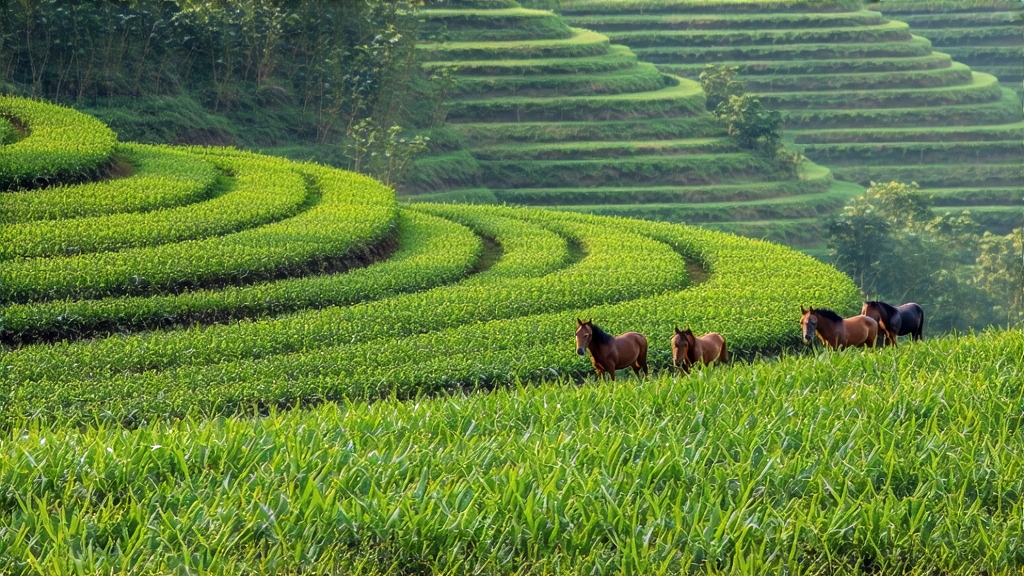
Tucked away in the humid, karst-pocked mountains of southern China’s Guangxi Zhuang Autonomous Region, Liu Bao cha has spent four centuries quietly fermenting its way into the hearts of tea caravans, dockworkers, and, more recently, global connoisseurs. While Pu-erh grabs headlines, Liu Bao is the sleeper hit of the dark-tea family—literally darker, historically older on the trade routes, and arguably more forgiving in the cup. To understand it is to taste the weather of the subtropical lowlands, the creak of riverboats on the Xun Jiang, and the patience of farmers who learned to let microbes finish what fire and hand began.
History: From Border Brew to Currency of the River
The first written record appears in 1637, when a Ming dynasty travel diarist noted “black biscuit tea from Cangwu” exchanging hands for salt near Wuzhou. By the Qing, Liu Bao had become a tax commodity shipped down the Xun Jiang to Guangzhou and on to Hong Kong, where dock coolies drank it to cut the grease of rice-heavy diets and humid labor. British colonial records list it as “basket tea,” referencing the distinctive 40–50 kg rattan baskets that compressed the leaves into dense, road-worthy columns for the Tea Horse Road’s southern spur. In the 19th century, overseas Chinese in Kuala Lumpur and Singapore hoarded vintage baskets as both remedy and savings account; a 1950s medical survey in Malaya found that 78 % of tin-mine laborers drank Liu Bao daily to ward against rheumatism and malaria—anecdotal, yet revealing the tea’s reputation as body armor against dampness.
Terroir and Leaf: Why Guangxi Tastes Different
Liu Bao is made from a large-leaf cultivar locally called “Zhong ye zhong,” thriving between 200–600 m on red lateritic soil laced with granite debris. The region’s annual 1,600 mm rainfall and 78 % average humidity create a microbial cloud so dense that tea masters joke the air itself inoculates the piles. Unlike Yunnan’s Pu-erh, which benefits from high-altitude UV stress, Guangxi’s lower, steamier elevation encourages broader leaves, higher pectin content, and a fleshier stem that survives repeated wet-piling without turning musty.
Craft: The Six Acts of Transformation
- Plucking: two leaves and a bud, late April to early May, when the spring monsoon swells cell walls.
- Kill-green: pan-fired at 280 °C for eight minutes to arrest oxidation while preserving leaf enzymes.
- Rolling: 35 minutes of machine-assisted twisting until leaf breakage hits 65 %—the sweet spot for later microbial entry.
- Sun-drying: spread on bamboo screens for six hours; UV index above 9 is mandatory to lock in a subtle “sun fragrance.”
- Wet-piling (fa jiao): the signature step. Leaves are sprayed with mountain spring water (pH 6.2), piled 70 cm high under jute tarpaulins, and turned every five days. Internal pile temperature is kept between 55–62 °C for 25–35 days, shorter than most Pu-erh shou, yielding a lighter, more betel-nut-like fermentation note. Indigenous microbes—Aspergillus niger, Blastobotrys adeninivorans, and a Guangxi-specific yeast Wickerhamomyces anomalus—drive the biochemistry, producing the tea’s hallmark “betel-nose” aroma reminiscent of areca nut and camphor.
- Basket compression & cave aging: the semi-fermented leaf is steamed, packed into rattan baskets lined with wild banana leaf, and transferred to natural limestone caves where relative humidity hovers at 85 % and temperature holds 20 °C year-round. Here the tea “rests” for a minimum of three years, often twenty. The cave’s constant microclimate allows slow aerobic fermentation, rounding edges and deepening the ruby liquor to a near-coffee black.
Grades & Styles: Reading the Basket Code
Liu Bao is graded by leaf maturity and basket age, not leaf size alone.
– First Grade (Te Ji): golden tips visible, 3-year cave age, betel aroma light, honeyed finish.
– Third Grade (San Ji): mixed leaf, 8–10 years, camphor and dried jujube dominate.
– Old Basket (Lao Kui):